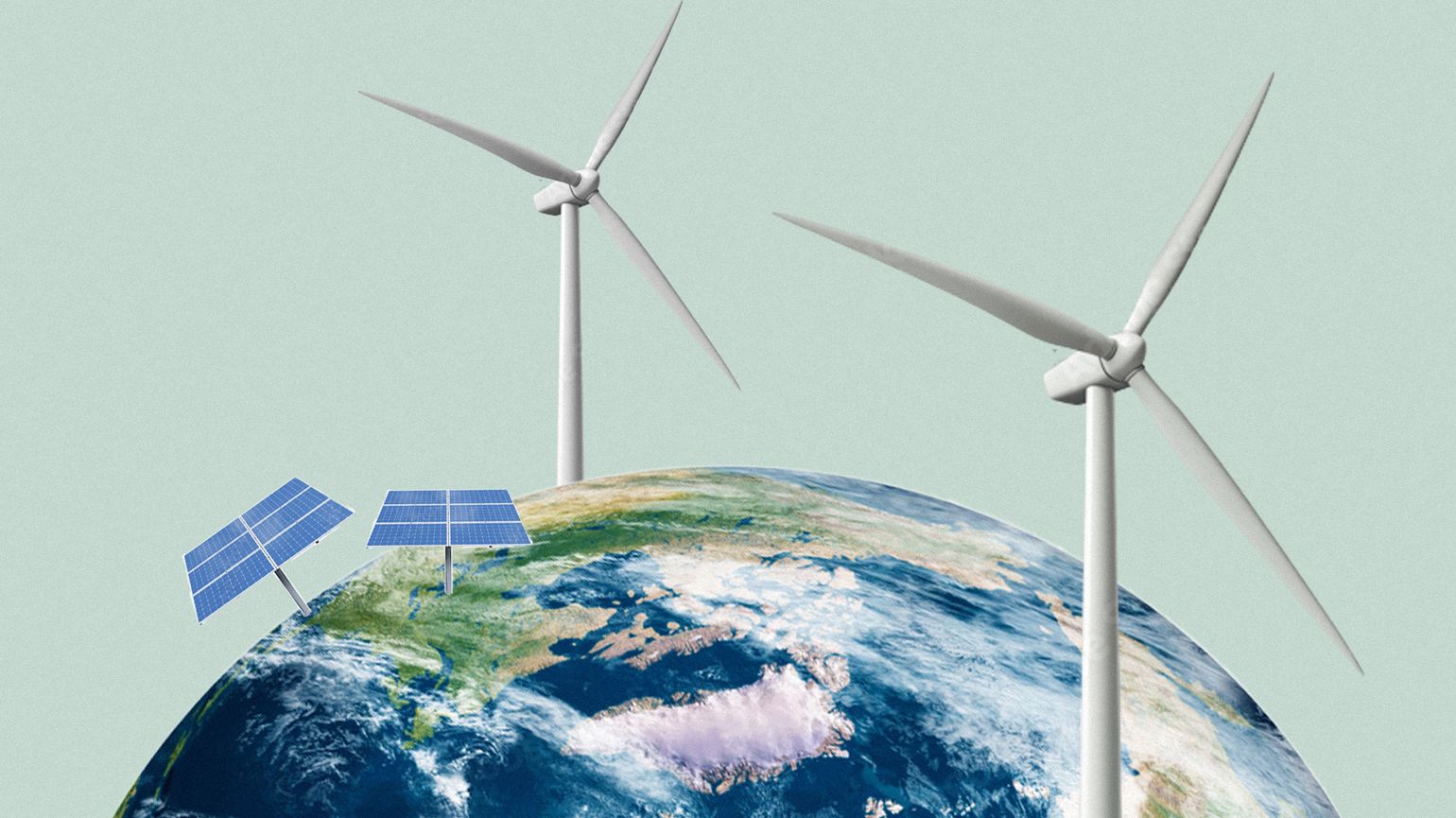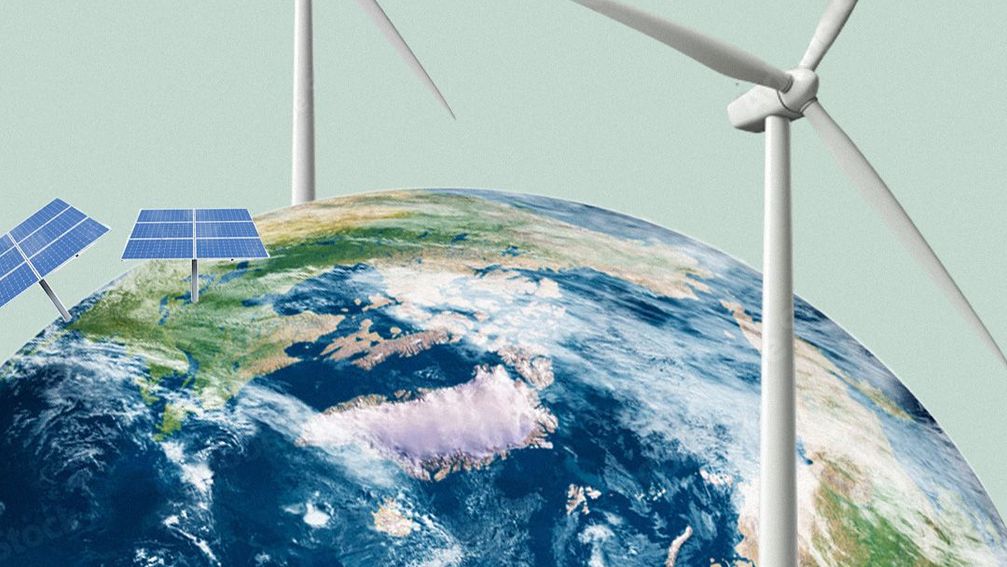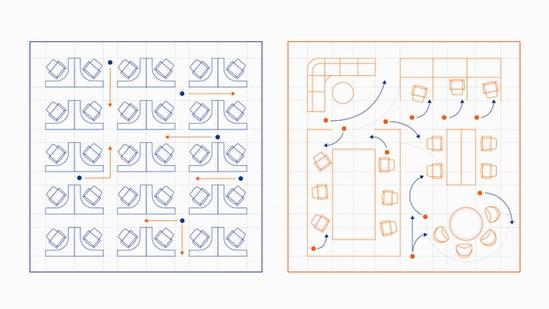The Energy Transition – Explained


Ever wondered what exactly the energy transition is, and what will be involved? Here’s a look at what the transition energy sources involve.
- The energy transition will transform the global energy system, electrifying and decarbonizing entire economic sectors to help drive a new industrial revolution.
What is the energy transition? In short, it’s the shift from fossil-based power to lower-carbon energy sources such as wind, solar, hydrogen and nuclear. Why does it matter? In 2024, the global rise in atmospheric CO2 was 3.75 ppm – the largest one-year increase on record. This outpaces the pathways set out by the Intergovernmental Panel on Climate Change (IPCC) that limit global warming to 1.5C. The world needs not a continuation of the status quo or a “slow evolution,” but a concerted and strategic shift.
The good news is that clean energy sources are steadily growing more cost-competitive than their fossil fuel counterparts, accelerating the transition to a renewable energy grid. According to the Environmental Protection Agency, the average unsubsidized cost of solar power dropped almost 85 percent between 2010 and 2023, and the cost of wind power dropped around 70 percent in the same time period. Meanwhile, renewable technologies such as batteries and solar photovoltaic (PV) technology gained traction, making them less expensive to manufacture and deploy as a serious component of the energy grid.
Innovations across different types of clean energy will help to drive the shift the world needs – but they require further investment and adoption.
Wind
First up is wind technology. Between 2023 and 2030, according to the International Energy Agency, global wind installations are projected to at least double. And according to the Global Wind Energy Council, there was a record 117 GW of new wind installations worldwide in 2024, bringing the global cumulative capacity to 1136 GW, with a projected compound annual growth rate (CAGR) for 2025–2030 of 8.8 percent.
Recent advances in technology have made wind energy more competitive in the market. Once a certain size and shape, turbines are now larger with taller towers, and longer cables, making it possible to access higher wind speeds and generate more energy at once. The engineers behind these turbines often have access to better simulation and modeling technology: advances in 3D modeling and composites have cut the cost of manufacturing blades by up to 25 percent. Meanwhile, niche markets have sprung up around wind turbine monitoring and repair, contributing in part to a thriving market.
However, companies will need to effectively integrate wind energy into the global energy grid to expand its reach. China, the US, Brazil, India and Germany currently make up 73 percent of all wind installs, with many smaller countries unable or unwilling to fund expensive wind projects. And while Italy is financing the transition for some smaller EU countries, governments worldwide will need to sort out how to support and subsidize national and international wind projects.
Solar
Solar is a renewable power source where sunlight is absorbed by photovoltaic (PV) cells and converted to energy. In the past, companies fabricated solar cells out of silicon, but newer cells, made with an added layer of perovskite, can achieve higher levels of efficiency. New models have achieved upwards of 34 percent efficiency in early experiments, beating the previous silicon record of up to 29 percent. What’s more, the notable drop in solar power costs in the last decade has made solar an equally important component of the future energy grid.
Some think the future of solar power lies in space. Both public and private sector groups around the world are ramping up their space-based solar power experiments to try and provide round-the-clock solar power to national energy grids. If their efforts pay off, space solar could help supply energy 24/7 and lower the cost to around $34/mWh by 2040, making it cheaper than nuclear power. Beyond the manufacturing complexity and expense, the primary challenge, again, will be integrating a new source of power into a legacy power grid.
Batteries
Wind and solar — unless we do make it to space — only provide energy at certain times of day, making them a more intermittent and unpredictable source of power. Currently, they can be supplemented with traditional fossil fuels. But as the world faces more extreme temperatures and energy grids are forced to adjust, strong, resilient energy grids need consistent and reliable energy inputs.
This is where next-gen batteries come into play. (Hello, organic materials in place of cobalt.) With battery storage, energy is transformed to chemical energy to be stored, and then back to electrical energy when it’s time to be released. As such, advances in battery manufacturing play a huge role in storing energy to address short-term fluctuations in renewables. And once companies start using a wider variety of materials, they can tamp down the costs of production and stop depending so heavily on tense geopolitical relationships.
Hydrogen
Called “renewable energy unplugged” by the World Economic Forum, hydrogen is what many think will decarbonize notoriously hard-to-abate sectors like iron, steel, cement, and heavy transport. Hydrogen is remarkably low-carbon. In a typical fuel cell, hydrogen and oxygen react and create water and energy as byproducts. Compared to fossil fuels, hydrogen lacks anywhere near the same level of carbon emissions. But not all hydrogen is “green” (carbon-free). Sometimes it falls into the “gray” area — when it’s dependent at least in part on the very fossil fuels it seeks to eliminate. Notably, critics also cite safety concerns, suggesting hydrogen is potentially risky and explosive.
But fuel cell technology is moving fast. Companies are trialing alternative storage, investigating electrode designs, and finding ways to avoid losing hydrogen energy during the production process. In the future, energy grids may see liquid hydrides or ammonia storage solutions to store extra power. And governments are keeping pace. In the EU, new rules with a special focus on green hydrogen refueling stations will go into effect by 2031, leading the way in using hydrogen to decarbonize transport.
Nuclear
Nuclear – one of the more controversial clean energy options – makes up about 10 percent of global energy and is driven by China, Japan, and the US. Nuclear operates through fission, where heat and energy in the form of radiation are released when a neutron and uranium-235 atom collide and split, so it only needs a small amount of uranium to provide plenty of power. To provide the same amount of energy as 2.7 million kilograms of coal, you would only need a single kilogram of uranium-235.
Opponents of nuclear energy have valid concerns: national safety, the challenge of storing nuclear waste, and the fact that – while generating nuclear power may be low-carbon – building, maintaining, and deconstructing a nuclear facility is not. From refining uranium to shipping reactor fuel, the carbon costs add up. Small modular reactors (SMRs) are cheaper and more resistant to accidents. Typically built around 300-700 MW(e), they’re also more easily turned on and off. And countries are taking note: Macedonia is already constructing several “mini” reactors, while Japan, by 2030, plans to relaunch 30 nuclear plants.
Looking forward
No technology is a silver bullet and, through 2050, society will need to use every clean energy technology and policy at its disposal to mitigate global warming and meet ambitions for the climate. In the meantime, key sectors of the economy will also have to scale back emissions and conserve their energy use. For example, building operations in particular is a sector that demands innovation – making up about 30 percent of the world’s total consumed energy. Here, insulation, high-efficiency HVAC, and LED technology can impact direct and indirect building emissions by a respective 8 percent and 18 percent. With energy-efficient advances such as heat pumps and smart thermostats, individuals and companies can reduce and control energy usage, even from afar.
In some foreseeable futures, the world’s major players double down on their resources to form a fragmented, reactive global energy network. In others, they share resources and knowledge to create a “connected” energy future. In the end, to create a resilient, renewable energy system, companies will have to combine forces, partner on research, and integrate new technologies into the grid. Will it be easy? No. But it’ll be worth it.
ThinQ by EQT: A publication where private markets meet open minds. Join the conversation – [email protected]




